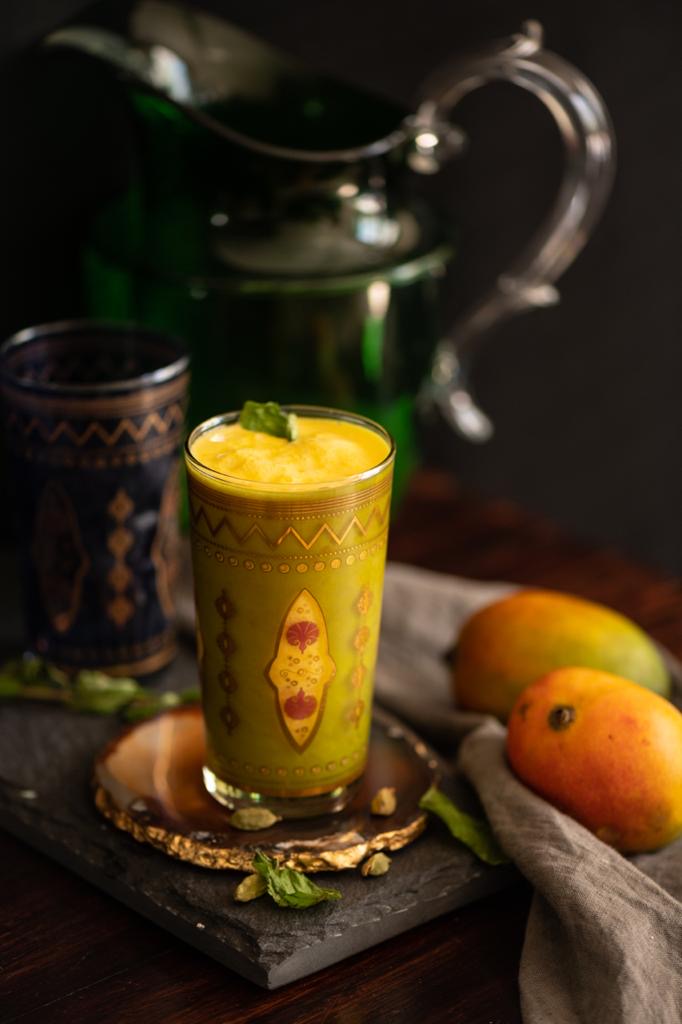Lassi is an extremely popular and very effective Indian beverage, a coolant that’s popular in the summer months. Being yoghurt-based, it not only reduces the heat in the body but is also rich in probiotics. Naturally, the classic mango lassi had to find a place in my ongoing mango series here on the blog!
This wonderful, lip-smackingly good mango lassi doubles as a dessert. The natural sweetness of the fruit is enhanced by the use of honey (or a sweetener of your choice). I like a flavourful lassi, so a little cardamom and a sliver of ginger go into mine as well.
Some wonder whether mangoes, which are known to be a “heaty” fruit, can really be eaten so much during the summer, despite this being the season when they are most delicious. I’d like to share a very interesting Ayurvedic technique that I came across. It seems that by simply soaking the fruit in water for at least half an hour before consumption, the heat is depleted from it. Mixing it with yoghurt as one does with this lassi also neutralises the heat.
Yoghurt in India is usually homemade, and dairy is consumed regularly. Chaas, also known as buttermilk, was a daily drink for us when we were growing up, as our mother insisted that we always had it after lunch. Lassi is a more indulgent dairy drink that has the same beneficial effects. It can be had salty or sweet, and flavoured in many ways. As a child, I enjoyed a watery lassi best. An excellent savoury variant uses ginger, green chilli, mint, coriander and salt. As for the best sweet variant, well, the recipe is below!
Mango Lassi
(Yield: 2 servings)
½ cup peeled & cut Alphonso mango
½ cup plain yoghurt
¼ cup plain milk
1 cup water
A pinch of salt
1 heaped teaspoon sugar or honey
¼ teaspoon cardamom powder
½ teaspoon grated ginger
A few mint leaves
Blend all the ingredients together, except the mint leaves. Adjust the water quantity based on your requirement. If you prefer a thick lassi, use less. Or use more to thin it according to your preference.
Top with ice and serve with the mint leaves as a garnish. Sliced nuts or saffron also work well as garnishing options.
Mango season will continue on this blog, and hopefully in the world too, and I have a variety of innovative dishes I’m excited about sharing with you soon. So do stay tuned for more fruity deliciousness to come!


